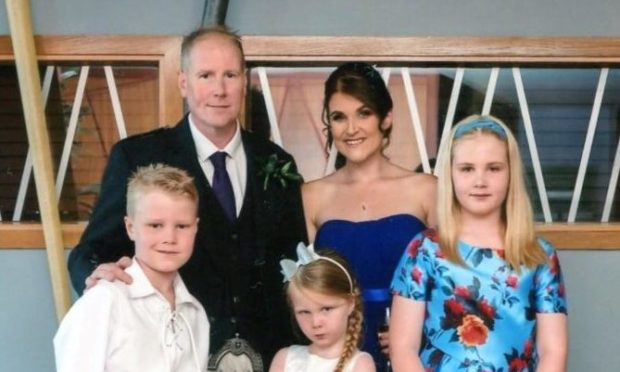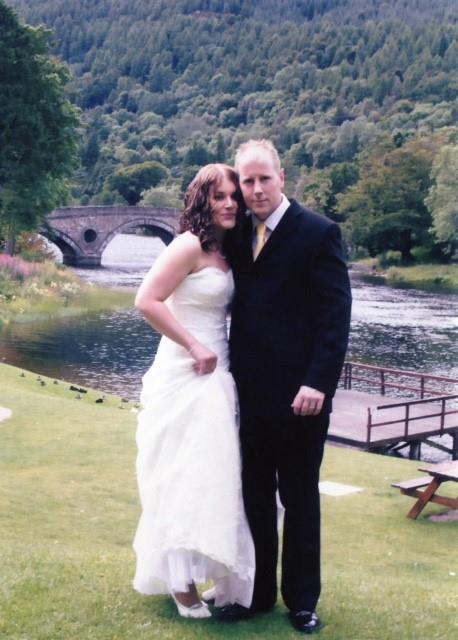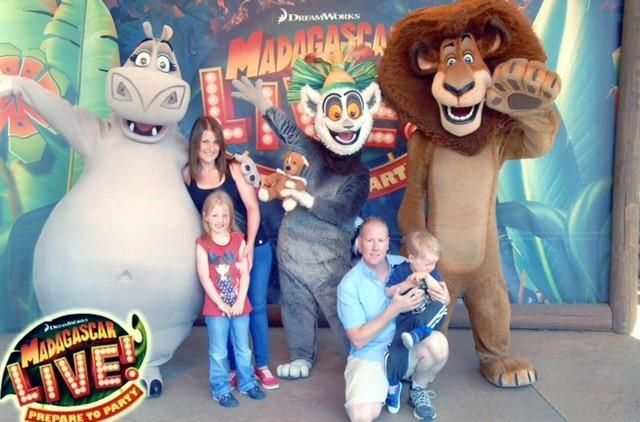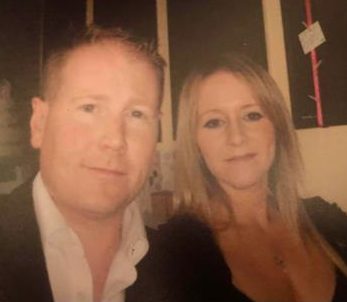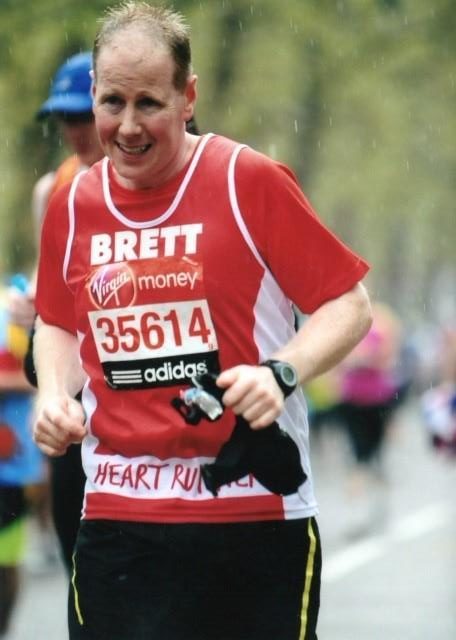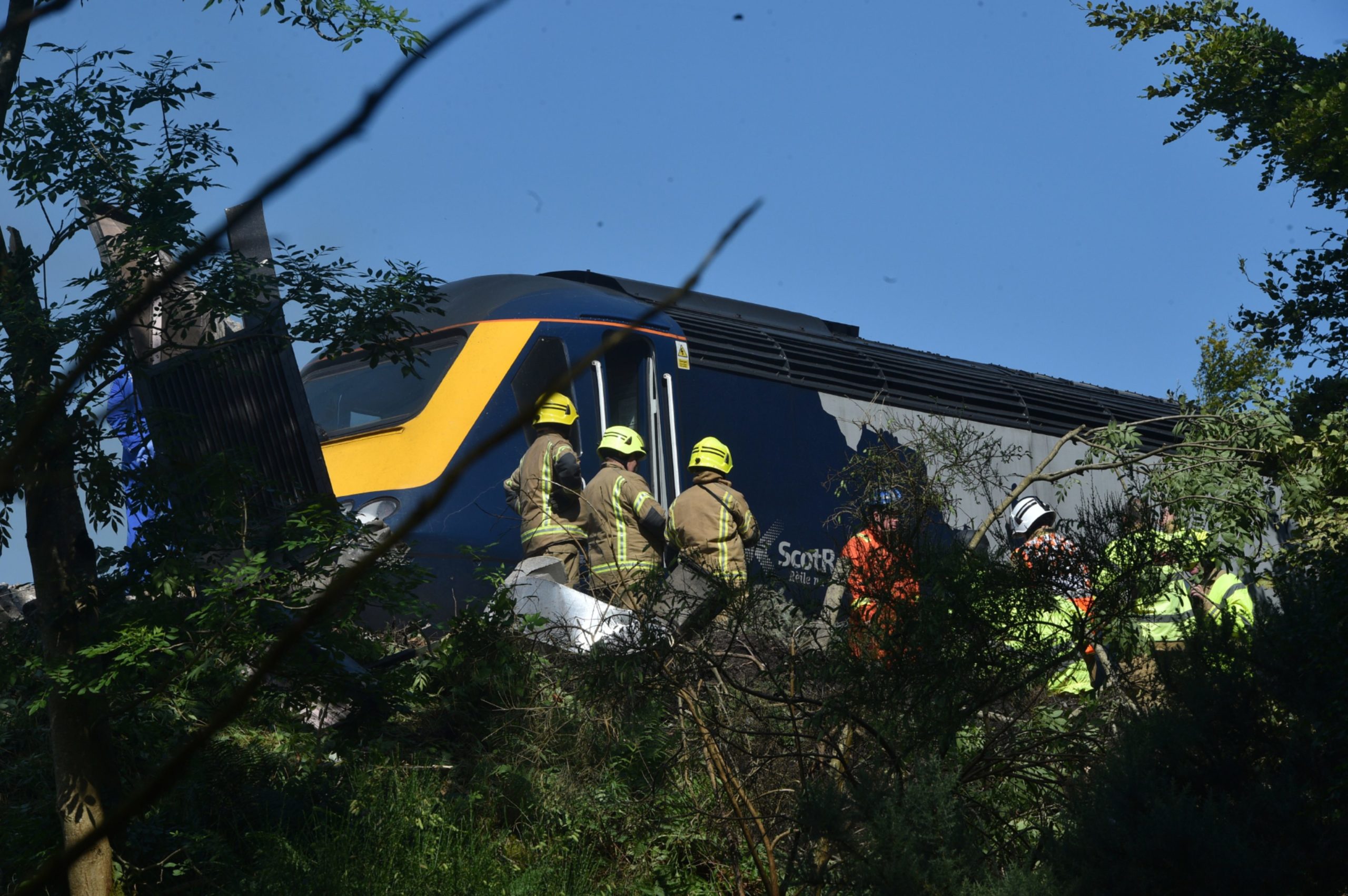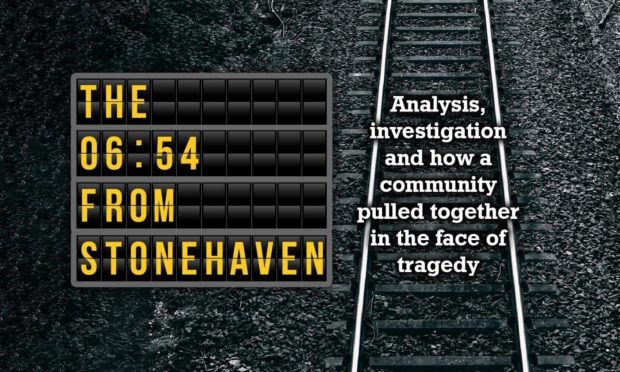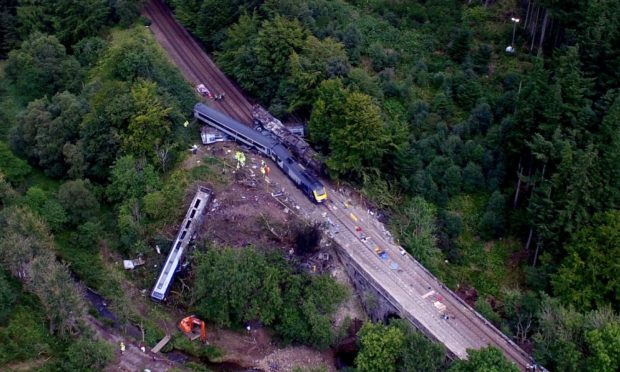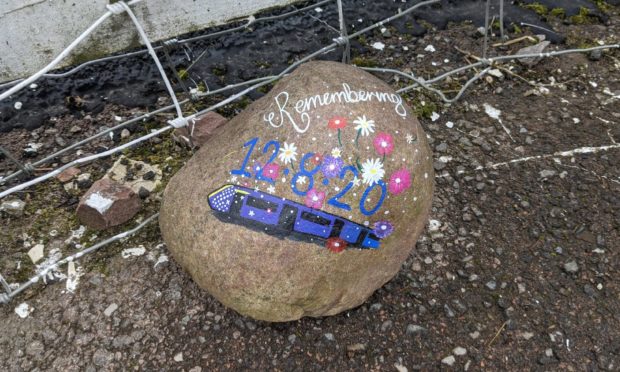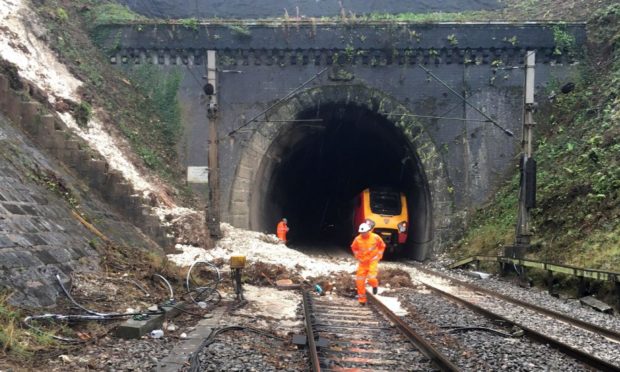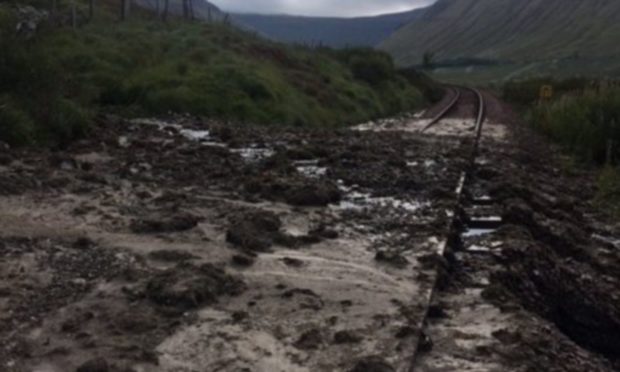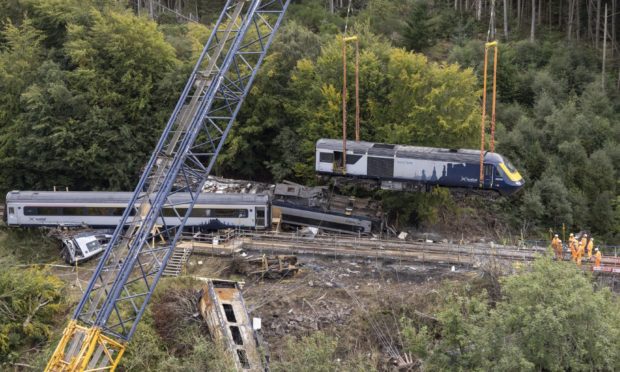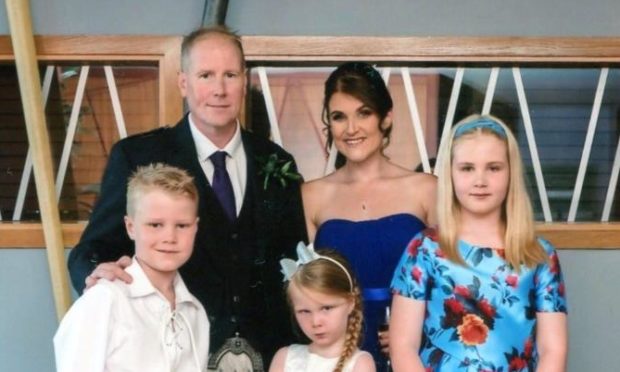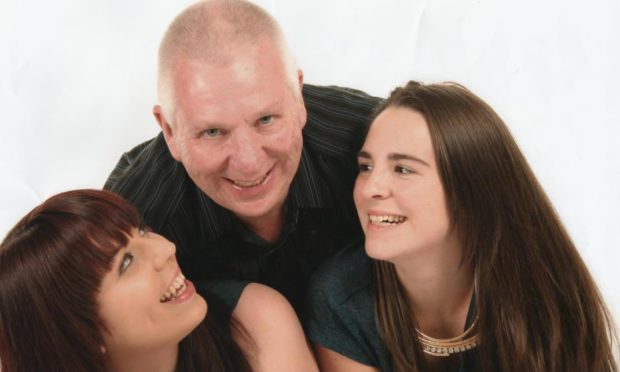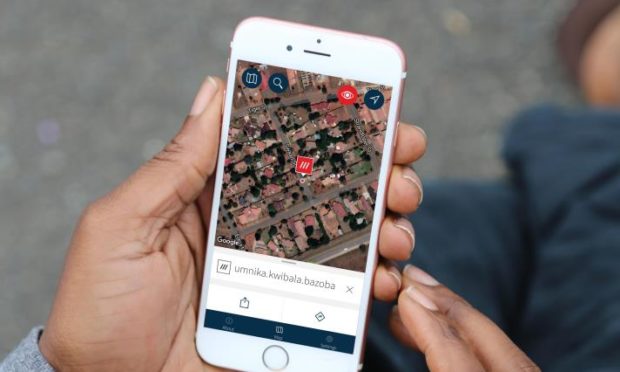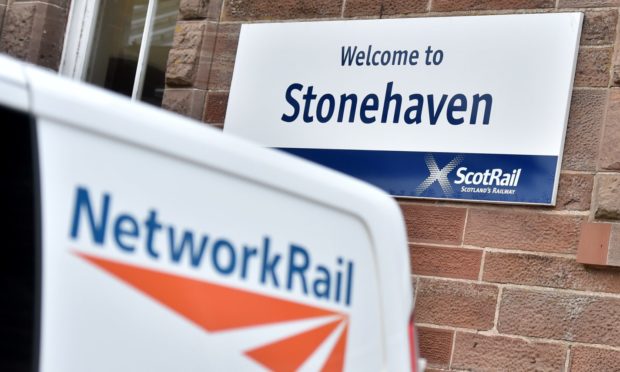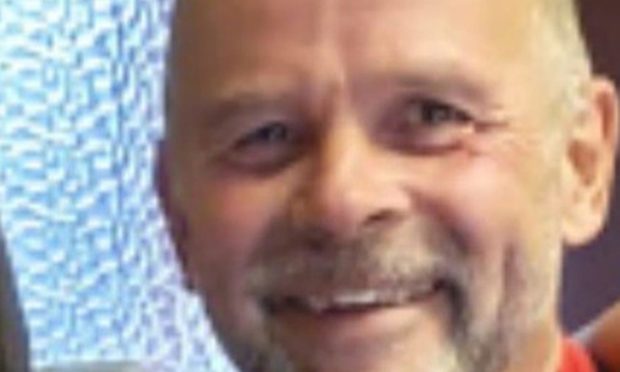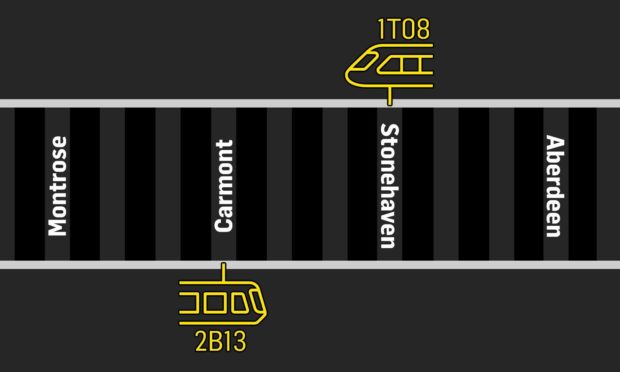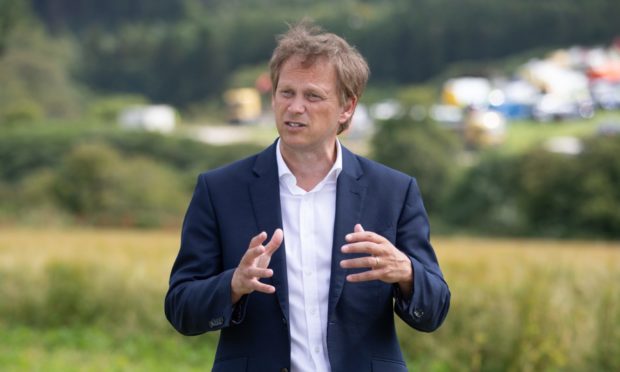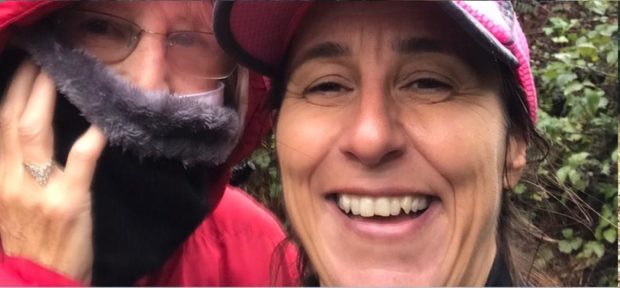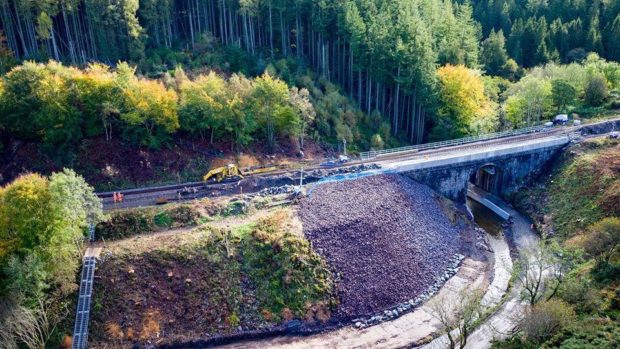Loved ones have paid tribute to the train driver killed in the Stonehaven rail crash – and have vowed to fight on for answers.
Brett McCullough was among three people killed in the derailment caused by heavy rain, the failure of a lineside drain triggering a landslide, and the scene being on a curved part of track.
Now for the first time, the 45-year-old’s wife Stephanie McCullough and sister Salina McCullough have spoken publicly of their love for Brett and how they have embarked on a quest for the truth about the tragedy.
Rail experts say Brett’s actions were “thoroughly professional” while union leaders have backed the family’s call for investigators to probe key questions.
Salina claims the tragedy could have been averted had Network Rail made bigger changes following six derailments seven years ago.
We have put those arguments to the organisations and have included their responses.
‘He was an amazing father’
Originally from Kent, Brett met Stephanie when he visited Aberdeen 15 years ago.
Upon returning to his home in south-east England, Brett told parents Ray and Beryl he had met a special person.
In 2008, the couple married on the banks of Loch Tay and they settled in Stonehaven.
Stephanie told us: “I met Brett 15 years ago, we moved in together and were engaged very quickly.
“We married in 2008 and have three children together – Annabel, Ben and Daisy.
“Brett was a very hands-on father. He never came home and just sat down, even if he had a long hard day at work.
“He helped with the cooking and cleaning and looked after the kids – he was an amazing father.”
Stephanie said the children loved it when their dad arrived home from work.
She added: “They would scream ‘Daddy!’ and run to him, where he would scoop them up and gave them big cuddles.
“He would always bring home sweeties and small toys he had got for them on his break at work.
“Brett always thought of us – especially his children – and loved to treat them.”
The dad of three was never one to sit still, said Stephanie, and loved doing jobs around the house and working in the garden.
She said: “He was building the kids a playhouse in the garden but sadly passed away before he could finish it.”
Brett loved to get out in the garden, said Stephanie, and was fond of a barbecue.
It saddens my soul that he will never walk my daughters down the aisle to get married or take Ben for his first pint.”
Stephanie McCullough
Stephanie said: “I would tease him because he would even cook his breakfast on the barbecue – but that’s what he loved to do.
“After spending his days off working in the garden, he loved to sit in the back garden and look over the fields at the beautiful view we have, with his newspaper and a cold beer.
“He would just be relaxed watching the kids play with their toys or in the paddling pool – all laughing and having fun.”
A doting father, Brett was also a caring husband, said Stephanie.
She added: “Brett always looked after me and when I was unwell he would tuck me up on the sofa with a hot water bottle, and he would take care of the kids.
“We led a simple life and that’s how we wanted it.
“Brett was very focused on his children and wanted to give them the very best.
“It saddens my soul that he will never walk my daughters down the aisle to get married or take Ben for his first pint.
“Our lives will never be the same again, Brett played such a special role in our lives and he will be forever missed.”
‘He will always be in my heart’
Stephanie thanked the thousands of people who have donated their hard-earned money to the families of the three men who died in the derailment. Fundraising efforts have now topped the £140,000 mark.
She added: “I do not remember the first few weeks as everything was a complete blur, but I do remember in my darkest hours the love and support I received from the local community and the whole country – and for that I thank you all so much. It truly helped me to keep going.
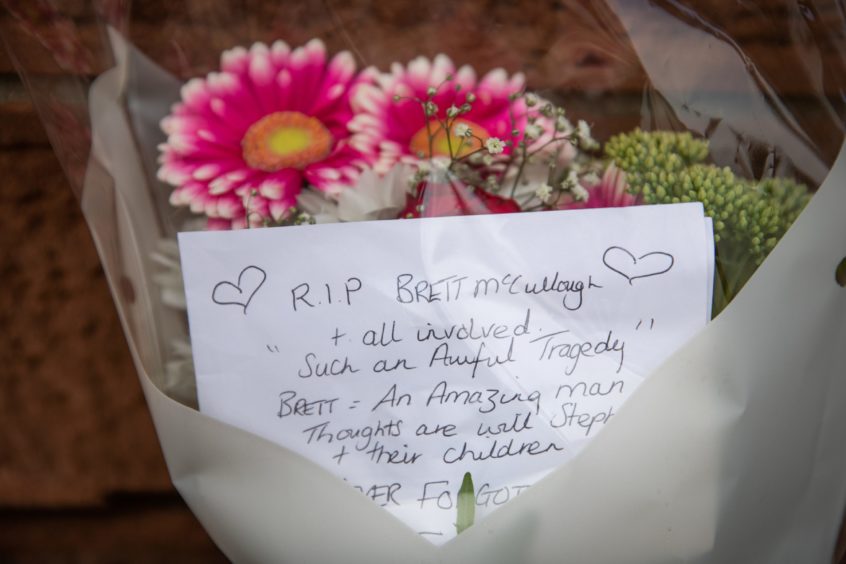
“Brett would be so proud that, even when the country is going through this awful pandemic and people are losing their lives, jobs and homes that there is still so much love and support. Thank you so very much from the bottom of my heart.
“Brett will always be my husband and best friend. Even though I cannot see him anymore, he will always be in my heart.”
Salina and Stephanie are in daily contact and are still trying to understand the events of August 12.
On September 1, a Rail Accident Investigation Branch (RAIB) investigation report was published and stated the train was travelling at 72.8mph.
The family believe it should have explained that line speed is the speed drivers are expected to go at – and that they would be failing in their job if they did not go at line speed.
That failure to explain, they say, led to some people wrongly believing Brett was driving too fast, even though he was driving below the 75mph speed limit on that part of the track.
It is understood RAIB has agreed to consult the family before any future report is published to avoid a repeat.
Stephanie said: “I’m pleased the newspaper is writing this piece to explain things for people who don’t know the railway.”
Rail experts who have studied the derailment say they wholeheartedly support the McCullough family’s argument that Brett did nothing wrong.
It is understood data recovered from the train’s black box, which includes recordings of conversations between Brett and his colleagues, supports that view.
Stephanie said: “Brett loved his job. He would always come home and tell me about his day – he loved chatting with people on the railway.
“He knew the rules are very strict. If you do something wrong, you could actually lose your job.
“Even if it’s something small, you’re taken off driving and thoroughly investigated. Brett knew that and was always really focused at work.”
Why was Brett’s train allowed to run when others were cancelled?
One key question the family have posed is why Brett’s train ran when two other Aberdeen departures were cancelled due to rain and the risk of flooding earlier that morning.
Addressing rail authorities in the hours after the crash, Salina said: “During one of the worst storms to hit Scotland, you sent my brother out to drive a beast of a train”.
ScotRail and Network Rail said they could not comment on decisions made on the day while two investigations are ongoing.
However, we have been told RAIB investigators will address this question in their final report – due out next year – after union leaders wrote to them.
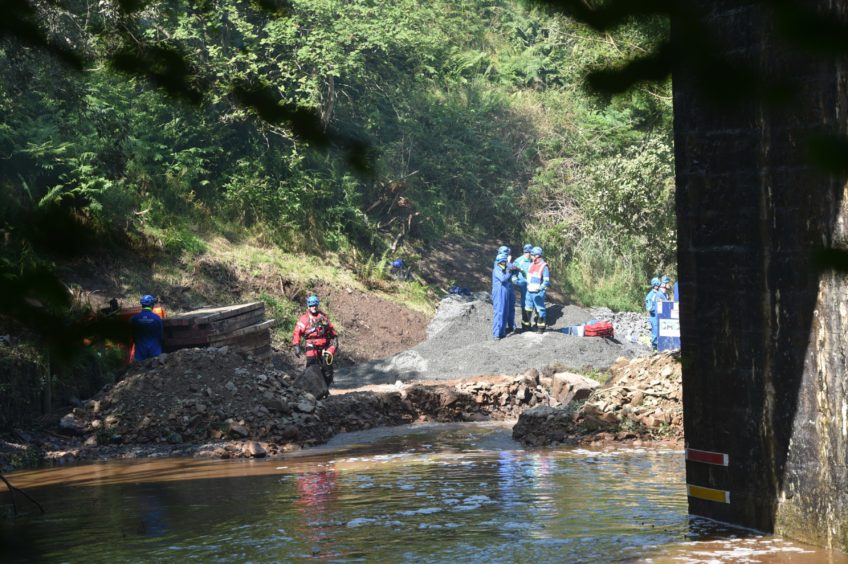
The family have also questioned why bosses did not instruct Brett to drive the train slowly back to Stonehaven, given the horrendous weather earlier that morning and given the crash site was known to Network Rail as an area that presented a relative risk of landslide to the extent it had been inspected twice in 2020.
ScotRail and Network Rail said they were unable to comment on ongoing investigations.
However, Network Rail said it has formed taskforces to explore the impact of climate change and safe earthworks on the railway.
‘Previous events could shed light on cause of Stonehaven rail crash’
Salina, who lives in North Carolina in the southern USA, has carried out detailed research into rail safety – and believes events in 2012 and 2013 are key to understanding the Stonehaven derailment.
In June 2012, a landslide derailed a freight train on the West Highland Line near Loch Treig. Three of the five wagons overturned and the locomotive ran part way down a slope towards the loch. Nobody was injured.
Landslips caused two more derailments in Scotland within a month of Loch Treig.
One was at Falls of Cruachan in Argyll. The train struck a boulder that had fallen from a slope onto the track.
None of the 70 passengers and two crew were injured though investigators said that, had the train been derailed “it is possible that it would have fallen down an adjacent slope.”
Salina said: “I wonder how many passengers traveling on that train are aware of how lucky they were that day?”
The other was at Rosyth near Edinburgh. Again, the train struck landslip debris. There were around 30 passengers and two crew on board. Nobody was hurt.
Three similar derailments took place in England by mid-February 2013 – all due to landslips.
RAIB launched an investigation, whose report said the landslips were “caused by factors including heavy rain (and) absent or ineffective drainage”.
The report made recommendations aimed at avoiding repeat incidents.
One was to use technology to assess areas at risk due to ground movement and another was to monitor rainfall to issue alerts of heavy rainfall when it has not been forecast.
It also referred to a protocol introduced in 2012, which instructs rail staff to check ‘at risk’ earthwork locations at least every four hours during amber weather warnings, such as those in place during the Stonehaven derailment.
Plans for changes in safety protocol were recommended eight years ago and were ignored – that is where the fault lies.”
Salina McCullough
Salina told us: “Loch Treig was a strong indicator of a catastrophe waiting to happen.
“Three weeks later, two more ScotRail trains, carrying over 100 passengers and crew, hit landslides in Argyll.
“The investigation found Network Rail should make a series of improvements to warn drivers of landslips.
“Clearly, Network Rail did not pay attention to these findings. Had it done so, my brother, Donald and Chris would still be with us today.
“Plans for changes in safety protocol were recommended eight years ago and were ignored – that is where the fault lies.”
A Network Rail spokesman said: “We work closely with RAIB and act upon their recommendations.
“The RAIB report (into the six derailments) is six years old and not really reflective of the current level of investment, operating standards or use of new technologies.”
Salina also questioned why it took Network Rail four days to report the Loch Treig incident to the British Geological Survey (BGS) and why it took BGS another seven days to inspect the site “by which time Network Rail had cleared away debris and was already replacing the tracks,” she said.
Her view is that BGS’s findings could have been more significant if the scene had been left untouched.
A Network Rail spokesman said: “BGS is a research and advisory body that we work with and who supply us with professional services, but they are not a body with any safety and legislative role in managing the railway or investigating accidents.
“Any significant safety incident on the network is reported in the first instance to the Office of Road and Rail and RAIB, who will then decide what investigations need to be undertaken.
“We would not begin to clear any accident site (such as Loch Trieg) without first consulting those bodies, and they would be informed as soon as possible after an incident occurs.”
A BGS spokeswoman said it took 11 days after the derailment for its staff to get there because they had to go from Edinburgh to a relatively remote location.
She added: “Our role was to collect data pertaining to geological process understanding, rather than with a view to the investigation of engineering design.
“The priority during all landslide situations is to ensure emergency responders can access events to save lives and make the situation safe.
“This can often take time in certain conditions. BGS integrates with other agencies in as timely a manner as possible and ensures that our reporting scenario is in context.”
Salina added: “Network Rail’s wider network resilience report into the Stonehaven derailment leans towards blaming climate change and unprecedented weather conditions for my brother’s death.
“But this can’t possibly be a valid excuse for what happened since they clearly saw red flags waving frantically at them eight years ago after the aforementioned landslides.
“Climate change is not a new thing. It’s ludicrous that Network Rail would suggest otherwise.
A Network Rail spokesman said: “We have significantly increased investment in earthworks over recent years – from £550m between 2009 and 2014 to a budget of £1.3bn Britain wide for the period between 2019 and 2024.
“In Scotland, between 2014 and 2019, we invested over £120m and we plan to invest another £149m by 2024.
“Similarly, our use of technology has increased significantly including CCTV, motion and acoustic monitoring systems, increased use of our helicopters to inspect slopes and also greater use of our specialist weather services to provide us with weather reports and rainfall modelling.”
Network Rail: Our rail network has better safety record than most comparable railways
Salina said: “Network Rail repeatedly states it has one of the safest railways in Europe.
“That might be the case according to fatality statistics, however, that doesn’t mean it’s safe – it has simply been extremely lucky.
“The railways were built 150 years ago without detailed engineering design.
“Steep embankments were constructed without reinforcements and, to this day, continue to be disasters waiting to happen.
“Network Rail states (in its wider network resilience report) that rebuilding miles of earthworks to modern-day standards is not practicable, either from a funding or deliverability perspective.
“So with all that in mind, how safe do passengers feel now that Network Rail’s failings are coming to light?”
A Network Rail spokesman said: “In general terms, our rail network is one of the safest in Europe and the August 12 accident was the first time we have seen a fatal train accident in this country since 2007.
“That is a better safety record than most comparable railways, such as Spain, France and Germany.”
Salina said: “I hold both Network Rail and ScotRail responsible for my brother’s death.
“Network Rail are guilty of wilful negligence in their continued failings to ensure the safety of their ‘at risk’ areas, of which there are 584 in the UK.”
A Network Rail spokesman said: “The 584 sites mentioned in the report share similar design characteristics to the site of the derailment – for example constructed from soil cuttings with track drainage.
“The sites were spread across the whole of the British network and 80 of them were located in Scotland.
“None of the sites inspected had major defects requiring immediate works.”
Salina said: “ScotRail is guilty of sending my brother out to drive a train when they had cancelled others that same morning due to flooding.
“From the information I have gained from experienced train drivers, the signalman is ultimately responsible for giving the driver the all-clear to proceed.
“So from what I can ascertain so far, there are multiple failures across the board.”
Salina added that she believes Network Rail and ScotRail might be “guilty of corporate homicide”.
Both Network Rail and ScotRail said they could not comment on this allegation during ongoing investigations.
A ScotRail spokesman said: “We’re unable to comment on the operational aspects of the incident due to the ongoing investigation by Rail Accident Investigation Branch and the separate Lord Advocate-instructed investigation by British Transport Police, Police Scotland, and the Office of Rail and Road.”
Internal investigation under way after firefighters struck by rolling car at crash scene
Salina has cited what was a bizarre incident that took place after the derailment as an example of how Network Rail needs to get its act together.
It is alleged that two Network Rail workers attended the crash scene in a car and that one of them left the handbrake off, causing it to roll and collide with four firefighters.
An anonymous source quoted by the Daily Record claimed the pair only attended to have “a nosey” at the crash site, though it is understood Network’s Rail said both had a role to play in the emergency response.
Two of the fire officers were taken to hospital. It is understood this was a precautionary measure, and Network Rail launched a probe into what happened.
It was also alleged that Network Rail’s stringent policy of carrying out alcohol and drugs test on its staff – including train drivers – was not applied in the aftermath of the car-rolling incident.
Network Rail has chosen not to address this allegation.
Salina said: “I’d like to understand if it is part of Network Rail’s safety policies and procedures to screen employees after incidents. It’s very odd they wouldn’t have a standard process across the board.
“Leadership is clearly not one of Network Rail’s strengths, when two employees are said to have attended the site to be onlookers, only to be responsible for injuries to critical emergency workers.”
A Network Rail spokesperson said: “An unattended Network Rail vehicle was involved in an incident at the accident site and an internal investigation is under way.”
The Scottish Fire and Rescue Service’s head of response and resilience David Farries said: “I can confirm that four firefighters received minor injuries whilst responding at Stonehaven on Wednesday, August 12.
“Two were admitted to hospital as a precautionary measure and were released shortly afterwards. Our health and safety investigation into this event remains ongoing.”
